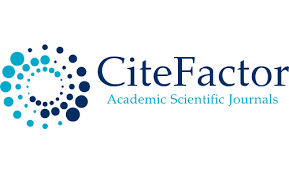Improving The Methodology Of Inquiry-Based Teaching Of Inorganic Chemistry Through Artificial Intelligence
DOI:
https://doi.org/10.62480/jpip.2025.vol42.pp1-4Keywords:
inorganic, insufficient, inquiry-based learning, methodologyAbstract
This article analyzes the issue of improving the methodology of inquiry-based teaching using artificial intelligence (AI). Traditional teaching methods are often insufficient for developing students' research and independent inquiry skills. Therefore, integrating AI technologies into the educational process has become an essential task. This paper examines the relationship between artificial intelligence and inquiry-based learning (IBL) methodology and explores its application in teaching inorganic chemistry.
References
Anderson, J. R. (2005). Cognitive Psychology and its Implications. New York: Worth
Publishers.
Wiggins, G., & McTighe, J. (2005). Understanding by Design. ASCD Publishing.
Mayer, R. E. (2014). Multimedia Learning (2nd ed.). Cambridge University Press.
King, A. (1993). From Sage on the Stage to Guide on the Side. College Teaching, 41(1), 30-35.
Turdaliyev N. (2018). Ekologik kimyo va suv muhofazasi. Toshkent: O‘zbekiston Milliy
universiteti nashriyoti.
Bozorova Sh, Shodiyorova X, Daminova M. (2023). Biological importance of iron in the
human body. SamDTU Stomatology Faculty, Online Conference No. 7.
Jose E. Dutra-de-Oliveira, J. Sergio Marchini, Joel Lamounier, Carlos A. N. Almeida. (2011).
Iron-fortified drinking water studies for the prevention of children′s anemia in developing
countries.
World Health Organization (WHO). (2021). Iron Deficiency Anemia: Assessment,
Prevention, and Control. Geneva: WHO Press
Downloads
Published
Issue
Section
License

This work is licensed under a Creative Commons Attribution-NonCommercial 4.0 International License.
User Rights
Under the Creative Commons Attribution-NonCommercial 4.0 International (CC-BY-NC), the author (s) and users are free to share (copy, distribute and transmit the contribution).
Rights of Authors
Authors retain the following rights:
1. Copyright and other proprietary rights relating to the article, such as patent rights,
2. the right to use the substance of the article in future works, including lectures and books,
3. the right to reproduce the article for own purposes, provided the copies are not offered for sale,
4. the right to self-archive the article.












